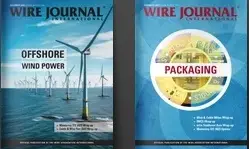The cost report for a copper cable manufacturing plant encompasses a wide array of elements, from a comprehensive market overview to minute details such as unit operations, raw material and utility requirements, infrastructure needs, machinery prerequisites, manpower necessities, packaging, and other specifications. Copper cables, which conduct electricity via copper wire, are a staple in electrical wiring due to their high electrical conductivity, ductility, and malleability.
These cables find extensive applications across various industries, including telecommunications, construction, automotive, and industrial sectors. The types of copper cables typically used include coaxial cables, twisted pair cables, unshielded twisted pair cables, armored cables, multi-core cables, and multiconductor cables. The high tensile strength and resistance of copper wire make it a popular choice for distributing power and transmitting data.
The global market for copper cables has seen significant growth due to industrialization, infrastructure development, and urbanization worldwide. The increasing demand for electricity and the need for upgrading power grid systems have led to a surge in the application of copper cables in power distribution and transmission networks.
Other key market drivers include the expansion of telecommunications networks such as 5G infrastructure and broadband, the rise of electric vehicles, the growth of renewable energy systems like solar panels and wind turbines, and increased government investment in smart cities and energy-efficient technology solutions. These factors are expected to boost the demand for high-quality copper cabling solutions.
The report by IMARC Group, titled “Copper Cable Manufacturing Plant Project Report 2025: Industry Trends, Plant Setup, Machinery, Raw Materials, Investment Opportunities, Cost and Revenue,” offers a comprehensive guide for establishing a copper cable manufacturing plant. The report provides detailed information on various aspects, including unit operations, raw material requirements, utility needs, infrastructure prerequisites, machinery and technology needs, manpower requirements, packaging needs, transportation requirements, and more.
Looking ahead to 2025, the copper cable industry is expected to witness steady growth, driven by factors such as urbanization and construction activities, modernization and expansion of electrical grids, the installation of renewable energy systems requiring extensive cabling, the proliferation of data centers demanding high-performance cables, the growth of electric vehicle charging infrastructure, and the rise of industrial automation.
The global market is projected to exceed $200 billion, with power cables being the largest segment, followed by building wires and telecommunication cables. Demand is expected to be sustained by infrastructure investments under government stimulus programs worldwide, particularly in emerging markets expanding electrical access and developed economies upgrading aging grids. Technological trends are also expected to play a significant role in shaping the industry’s future.



